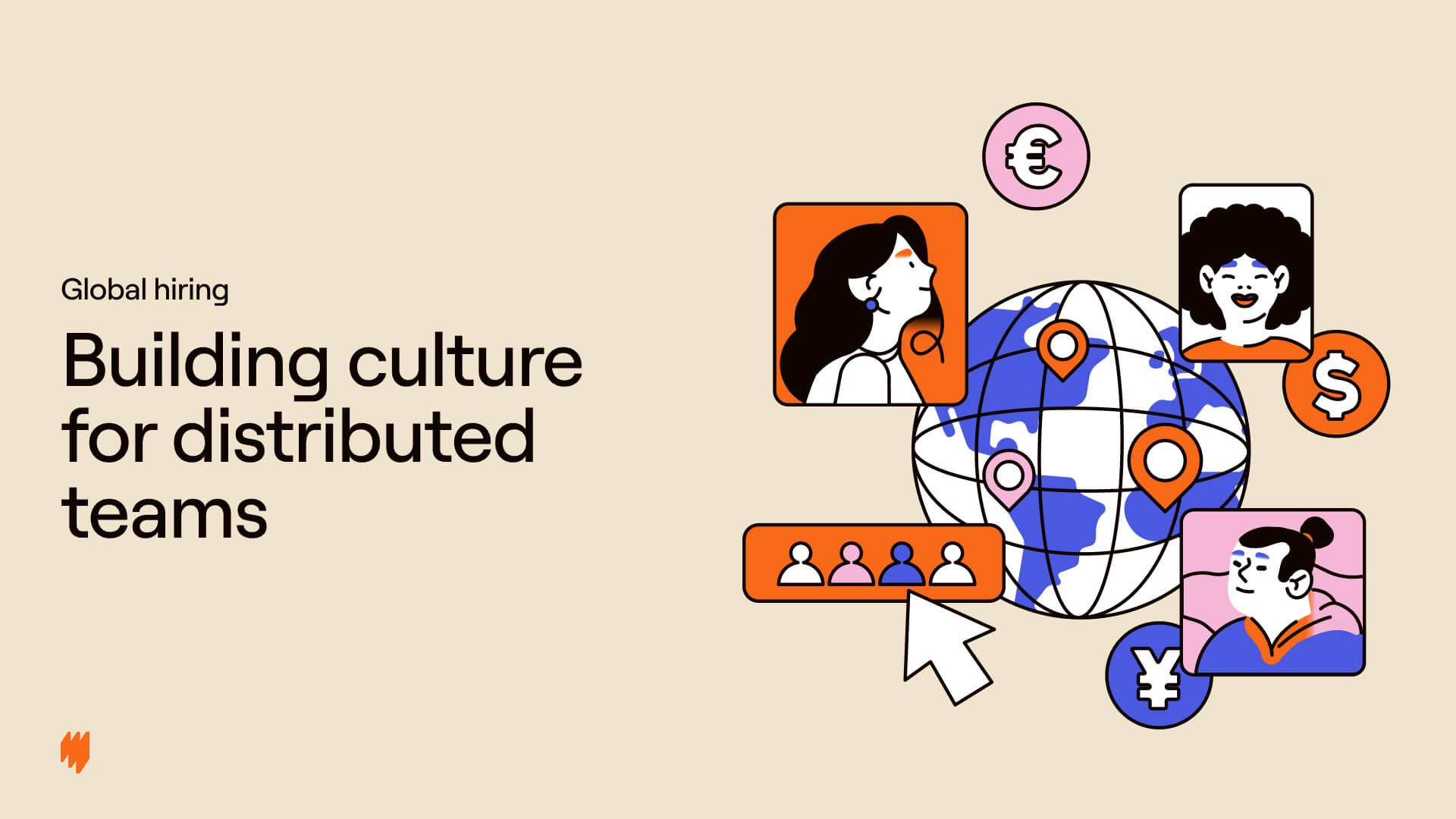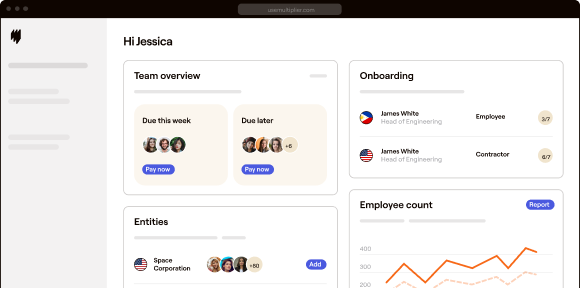Employees embedded in a strong team culture are around 55% less likely to look for other jobs, but the benefits of a strong culture go far beyond retention.
A positive team culture is the backbone of a successful organization. It helps employees feel connected to the company and aligns them with your strategic goals, leading to higher productivity and engagement.
Embedding this culture is difficult enough for companies operating in a single location, but these challenges are compounded for organizations managing globally distributed teams where a disconnect can easily creep in.
In this article, we’ll explore the challenges of building remote team culture in more depth before examining the best practices to overcome them.
The importance of team culture for remote workers
Building a remote team culture that employees connect with makes them 3.7 times more likely to be engaged, and engaged employees are 14% more productive.
The secret to curating these culturally integrated remote teams is embedding a culture that prioritizes collaboration, and inclusivity.
To create a sense of belonging, these goals need to be integrated with the full employee lifecycle, from initial recruitment and onboarding to day-to-day workflows and CPD.
Smooth global employment processes and an environment focused on inclusivity and communication fuel productivity, engagement, and retention, supporting remote workers to feel engaged and valued.
Let’s look at the main obstacles to achieving this.
The challenges of building remote team culture
The effects of isolation, cultural disconnect, and poor communication are challenges for any organization, but a lack of face-to-face interaction magnifies them significantly. Here we take a closer look.
Lack of belonging
Morning ‘Hello!’s, casual chats by the water cooler, and lunchtime coffee runs all contribute to a sense of understanding, connection, and trust. Without the ability to engage in these spontaneous, informal conversations, it can be harder for employees to build meaningful working relationships.
This lack of unplanned personal interaction can make it much more difficult to build the same level of trust and camaraderie, leading to feelings of isolation and even loneliness. Remote workers can start to feel far away from their colleagues, reducing their engagement and damaging their well-being.
Cultural drift
Distributed teams who come from different cultures can have varying expectations about how life at work should look. For example, they may have different boundaries around issues like working hours or out-of-office communication.
This can be fixed with positive assimilation initiatives like requiring everyone to adhere to a behavior policy. However, there’s a fine line between promoting a cohesive culture and forcing negative assimilation in teams composed of individuals from diverse cultures and backgrounds. This is caused by initiatives that directly or indirectly pressure diverse employees to avoid cultural expressions.
Communication and collaboration
Considering that 90% of effective communication is nonverbal, it’s easy to see why collaboration can be more difficult for remote teams. Nuances can be missed when relying on email, chat, and project management tools; this issue is often made worse by the time-zone differences and delayed communications prevalent in global teams.
It’s not just team-wide collaboration that takes a hit though. Individual creativity can also be hampered too. While quiet time alone can help some people produce innovative suggestions or new ideas, it’s not the case for everybody. Less confident or neurodiverse members of staff might need support to share their thoughts.
Organizational silos
When different departments and teams are working in isolation, as is often the case within distributed teams, it can be challenging for remote workers to understand the wider strategic goals and cross-departmental initiatives in their organization. This can lead remote workers to focus only on immediate tasks and fail to understand how their work fits into the big picture.
Best practices for building team culture
Building a positive team culture requires intentional strategies that foster connection, inclusivity, and cultural understanding. Start by implementing these best practices.
Effective remote team building
Motivating remote staff and making them feel valued starts with team building that really works. Effective strategies will create a sense of connection and make remote workers feel like an integral part of the organization.
Start with effective remote onboarding that introduces new staff to the wider organization as well as those in their immediate teams. Conduct regular check-ins to make sure they feel included, and provide ample training and resources so they understand how to work alongside their colleagues.
Frequent virtual team-building activities are important to build relationships and help workers connect with their colleagues beyond the surface-level interactions of virtual meetings. These shared experiences will start to build a sense of belonging and help dispersed teams better understand their colleagues. This will be beneficial when the time comes to collaborate on an important project or tackle a shared problem.
Integrate cultural competency into CPD
Cultural competency is the ability to understand, communicate with, and effectively interact with people from diverse cultures, backgrounds, and beliefs. Promoting continuous learning and development here is vital for supporting employees and building a strong culture across teams with diverse backgrounds and communication styles.
You can implement cultural competency training through workshops and seminars. These should focus in part on educating employees on understanding cultural norms and in part on adapting their communication styles to suit different co-workers.
Open up communication
Open lines of communication foster an environment where employees feel comfortable expressing themselves and raising concerns, reducing misunderstandings and enhancing collaboration. This is crucial for supporting employees and building a positive team culture in distributed teams.
Regular team meetings, one-on-one check-ins, and open forums can bridge language gaps while using clear language and providing translation tools ensures everyone can interact and understand each other.
It’s also important to ensure all team members fully understand the tools and channels at their disposal, as well as how each co-worker or department prefers to communicate.
Gain back time to support your employee
HR teams play a pivotal role in supporting distributed teams; when their time is taken up ensuring compliance, organizing benefits, and managing several different payroll systems, employee experience can suffer.
Multiplier is an Employer of Record that acts as the legal employer of your distributed team, handling compliance across regions, organizing localized benefits, and managing global payroll in line with local laws.
When you identify a new hire, we’ll send over a customized, compliant contract and then support them in uploading their details to our system. You’ll save time by outsourcing tasks, but still be able to track and manage employees in one place. This means a great employee experience at every stage.
Got questions? We’re available 24/5 for support. Speak with one of our experts today to find out more.






